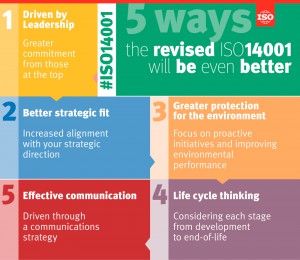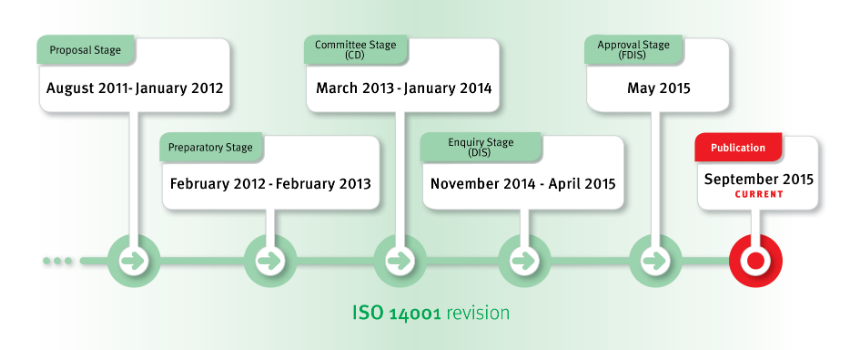Revised ISO 14001 Standard Released

GLOBE-Net, September 15, 2015 – The International Standards Organization (ISO) has released the latest version of ISO 14001, one of the world’s most popular standards for environmental management.
ISO 14001:2015, which sets out the requirements for an environmental management standard, is one of the world’s most widely used standards and a key business tool for many organizations.
With more than 300 000 certificates issued globally every year, it ranks high on the agenda of many organizations worldwide who place importance on their environmental impact.
To ensure it remains relevant to the marketplace. ISO 14001:2015 responds to the latest trends, such as an increasing recognition by companies of the need to factor in both external and internal elements that influence their impact, including climate volatility.
 Other key improvements in the new version include:
Other key improvements in the new version include:
- A greater commitment from leadership
- An increased alignment with strategic direction
- Greater protection for the environment, with a focus on proactive initiatives
- More effective communication, driven through a communications strategy
- Life-cycle thinking, considering each stage of a product or service, from development to end-of-life
Now, as ISO 14001 approaches 20 years in existence, Anne-Marie Warris, Chair of ISO/TC 207/SC1, the technical committee that developed the standard and undertook the revision, is confident that the new version promises its relevance for 20 more.
“ISO 14001 has fulfilled many of the dreams we foresaw over the last 20 years, including helping people to manage all their environmental issues in a holistic manner,” she said.
“Looking forward, the new version will help with a stronger integration between environmental issues and an organization’s strategic action planning and thinking.
What’s more, she adds, “I foresee the life-cycle perspective and supply chain issues embedded in ISO 14001 becoming stronger in the future.”
ISO 14001:2015 is applicable to any organization, regardless of size, type and nature, and applies to the environmental aspects of its activities, products and services that the organization determines it can either control or influence considering a life cycle perspective. ISO 14001:2015 does not state specific environmental performance criteria.
ISO 14001:2015 can be used in whole or in part to systematically improve environmental management. Claims of conformity to ISO 14001:2015, however, are not acceptable unless all its requirements are incorporated into an organization’s environmental management system and fulfilled without exclusion.
ISO Acting Secretary-General Kevin McKinley said the newly revised ISO 14001 reflects many changes in technology and what stakeholders expect of organizations.
“It is also a competitive advantage,” he said. “ISO 14001 is something that organizations can use to distinguish themselves from their competition, and in many cases also providing financial advantage, helping organizations to realize efficiencies and improve performance.”
The revision is the culmination of work done by 121 expert members of technical committee ISO/TC 207/SC 1 for environmental development, which is led by BSI, ISO member for the UK, representing multiple stakeholder groups from 88 countries.

ISO 14001:2015 sets out the criteria for an environmental management system and can be certified to. It maps out a framework that a company or organization can follow to set up an effective environmental management system. It can be used by any organization regardless of its activity or sector.
Learn more about the benefits of ISO 14001:2015.
The new standard is available here
For a complete Guide to the new ISO 14001, visit here



